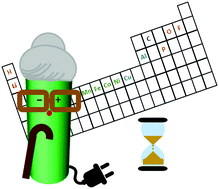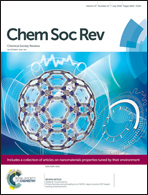Understanding ageing in Li-ion batteries: a chemical issue
Abstract
Performance degradation over Li-ion battery lifetime is unavoidable and ultimately rooted in chemical processes. Their extent is mostly determined by battery material components and operation conditions (charge/discharge rates, voltage operation limits and temperature) and can also be influenced by battery design. The two major factors contributing to loss of negative electrode performance are the instability of the passivation layer formed at the electrode/electrolyte interface (enhanced at higher temperatures) and lithium metal plating (intensified at low temperatures). In contrast, capacity fading at the positive electrode mostly results from partial dissolution of the active material during cycling/storage or electrolyte solvent oxidation, which is promoted by temperature and high potential. While it would be most useful to be able to monitor degradation at all levels while the cell is being cycled, the feasibility of this approach remains limited, and most approaches involve accelerated testing with ante/post mortem characterization. Yet, the use of suitable protocols for battery opening and disassembling is crucial to avoid biased interpretation. Finally, the relevance of degradation diagnosis coupled to modelling is also worth mentioning.



 Please wait while we load your content...
Please wait while we load your content...